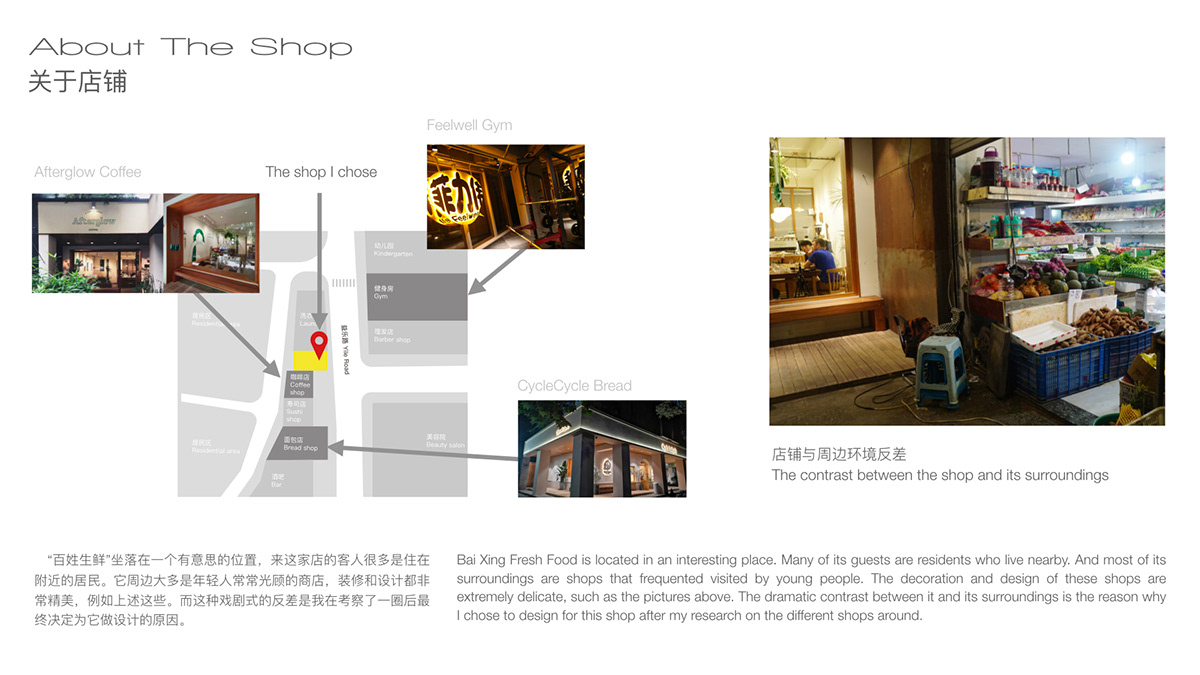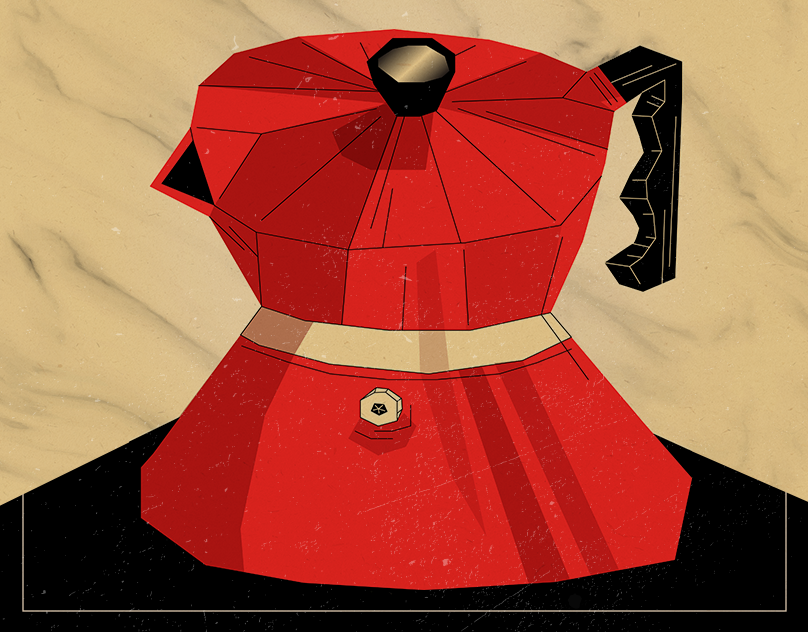
Three-day-project on a food shop
This is the test assignment of Lava Beijing's Summer Studio. I was told to design a logo for a local shop. The shop I chose is called Bai Xing Fresh Food(It can be translated into “people’s fresh food”. But I kept its Pinyin as its English translation because the pronunciation is more familiar to people who know it). The shop sells vegetables, fruits, aquatic products, poultry, pork, dry goods, grain, and oil. It took me about three days to get the whole work done.
小菜店的三日改造计划
LAVA工作室暑期实习的笔试题,要求为一家本地商店设计logo。我选择的这家店名为“百姓生鲜”(我保留了拼音作为英文翻译,这样知道这家店的人听到英文的名字时不会感到陌生),经营内容包括蔬菜、水果、水产、家禽、土猪肉、干货、粮油。我总共花了三天时间完成设计、制作成品和落地。



The owner filled out this form according to the needs, and I used this as the basis for the design.
店主根据需求填写了这张表,我以此作为设计依据。


I found that the price tags in the store were special. They were written on foam box pieces with a marker. They were in different sizes. Some of them used a bamboo stick to stand in the middle of the stacks, some were clipped, and some were placed in the corner. The owner said that he did this because the content changes a lot, this is the easiest way he can find. While trying to persuade the shop owner to join my plan, he kept saying that the logo was useless to him and tried to refuse me. But when I mentioned that I could help him with a new solution to the price tag, he suddenly became interested, so we reached an agreement.
我发现店里的价签有些特别,是用记号笔在掰碎的泡沫箱上写成的。它们尺寸各异,有的用竹签穿过立在菜中间,有的是夹起来的,有的直接放在角落。店主说因为价签内容常常变化,所以用了这个简单粗暴的方法。在尝试说服店主成为我的合作对象时,他一直说做个标志对他没有什么用,而试图拒绝我。但当我提到可以帮他想想价签的问题时,他忽然来了兴趣,于是我们就达成了约定。

I think the original method of using bamboo sticks to fix price tags in the store is very smart and flexible, so I chose the Kt board as the printing material to help keep this practice. At the same time, I set up an area on the price tag that can be handwritten and modified to facilitate the owner to update the price and write the product details.
我认为店里原来用竹签固定价签的方法是非常聪明和灵活的,因此我选择了KT板作为印刷的材质以方便保留这一做法。同时我在价签上设置了可手写和修改的区域,方便店主更新价格和书写商品细节。

I made two versions of different price tags for the 23 products usually sold in the store. I decided to print the name of the product on the price tag to solve the problem that handwriting is not easy to recognize. In the second edition, I increased the size of the handwriting area so that the store owner could add some product details under the product category-for example, there are two kinds of pineapples in the store: "Hainan pineapple" and "Taiwan pineapple". In addition, I also reduced the size of the tags on the basis of the first edition, in order to avoid excessive visual occlusion caused by the large price tag.
我为店里常用的23个商品做了两版不同的价签。我决定将商品的名称打印在价签上,以改良手写字不易识别的问题。第二版中我加大了手写区域的尺寸,方便店主在商品大类下增添一些产品细节——例如店里的凤梨就分为“海南凤梨”、“台湾凤梨”两种。另外我还在第一版基础上缩小了尺寸,为了避免价签过大在视觉上造成的过多遮挡。














Thanks for watching! :)
Follow me if you like my work.
感谢观赏,如果喜欢我的作品请关注我,偶有更新。




